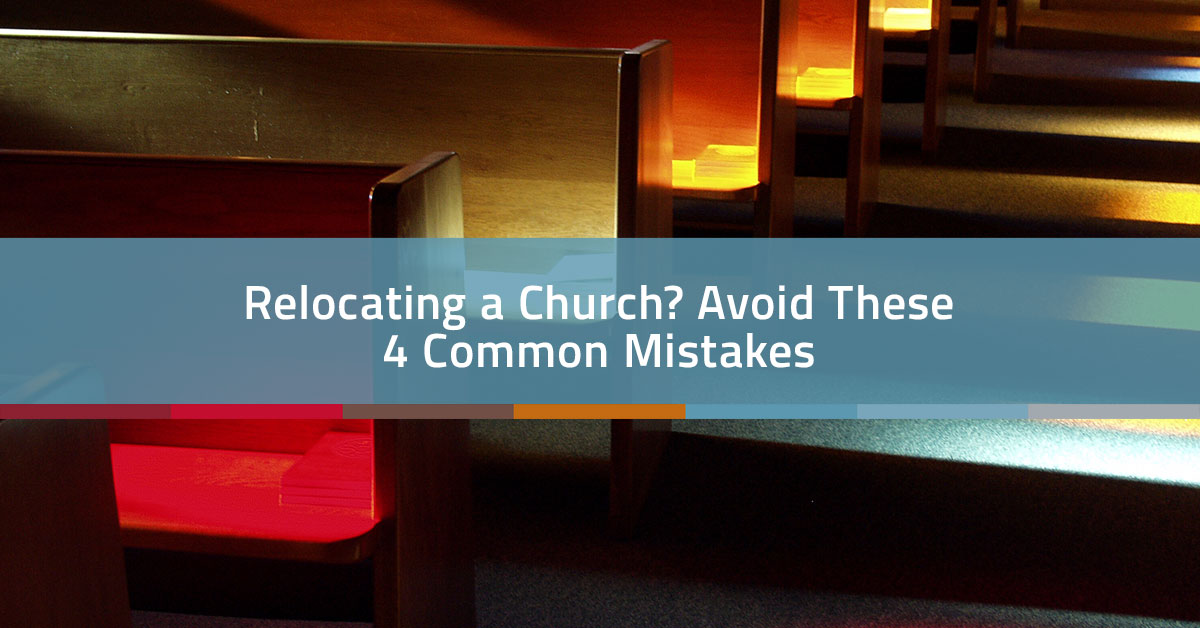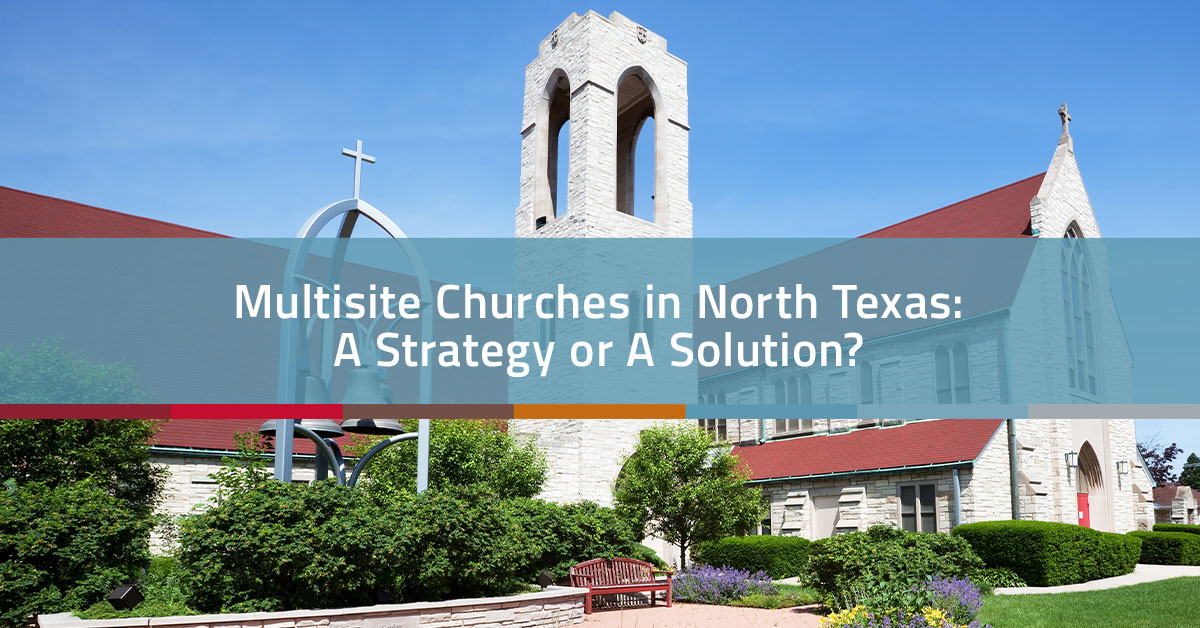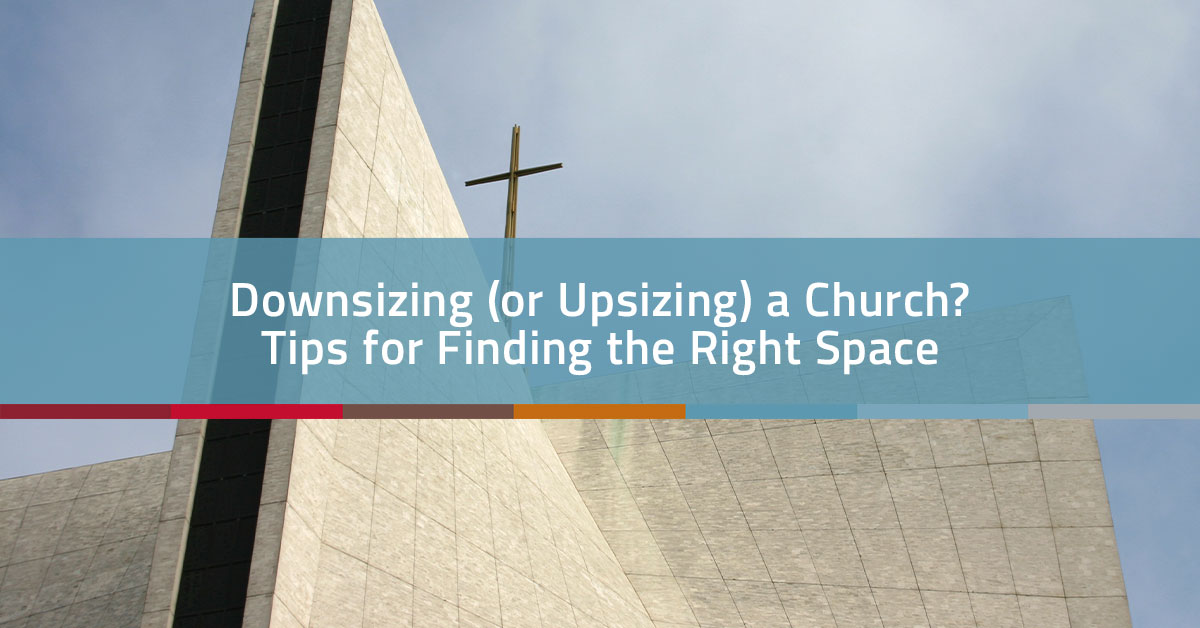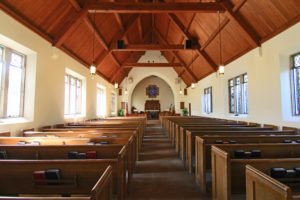Churches of all shapes and sizes are searching for locations to maximize the impact of their ministry. From the downtowns of our largest cities to the suburbs, church plants occupy schools, hotels, theaters, and shopping centers. Every church needs facilities that meet the needs of their ministry in order to share the Gospel effectively. Whether it is finding enough sanctuary seating or having classroom space for toddlers and children, the church faces questions about how to be most effective as they seek to reach people in new and different places.

Does the Facility Meet the Mission?
At the core of the evangelical church is the desire to reach as many people as possible with the saving message of the Gospel. A megachurch and a local community church must both face the same question: Does the facility allow the church to accomplish its ministry effectively? A small church building that seats 200 people may have great preaching and programs, but if there are not sufficient facilities to meet the needs of the ministry, then growth will stop, and people will search for another church that provides better programs. Likewise, a megachurch that builds a 5,000 seat sanctuary must make sure that the education space that is built is strong enough to support the seating capacity. Church leaders must consider how their facilities affect the ministry.
The Growth of Multisite Churches
As churches evaluate their facility issues, the options of expanding, relocating, and multisite are options that are considered. In a survey of the largest 100 churches in America, there are more multisite churches than there are megachurches. In this survey, conducted by Ed Stetzer and Lifeway Research, 75% of the 100 Largest Churches in America are using Multisite, and 59% of the 100 Fastest-Growing Churches in America have more than 1 location. When church leaders meet to discuss the mission and vision of the church, multisite is a hot topic as a strategy to reach people in different locations. So the question presents itself: Is multisite a strategy or a solution?
Avoiding Church Planting Failure
At the inception of starting a church, it is essential to understand the mission and vision of the church. Many church planters start their church based on a call from the Lord and begin with a small number of resources and the prayers of the people or church that sends them. Today, traditional church plants have a failure rate of close to 50%. Despite great church planting organizations like Acts29, church planters face an uphill battle. Church planters work hard to plant a church on limited funds, in rented facilities, and with minimal staffing. Often a young Pastor and his young family enter a new environment with limited organizational or financial help from a sponsoring church. On the other hand, these great church planters go out into their personal “Jerusalem” and get plugged into a community and build relationships that help build the foundation for the new work, the church plant. Church planting is key to the great commission, yet many are starting to question there a better way to avoid seeing 50% of church plants fail and see a Pastor burnout.
Multisite Churches as a Ministry Strategy
Traditionally growing churches have started church plants as the church seeks to Biblically spread the Gospel and start new works in new locations. The model of a church sending out a Pastor with their prayer, blessing, and some form of financial support is changing.
Today, many healthy churches are exploring multisite to begin new “church plants” in new cities, states, and even around the world. Multisite has become an option that allows churches to plant new starts with strong leadership, financial strength, and better resources. As churches explore multisite, they come to realize that multisite enable the church to be a better steward of resources.
Mike Buster, the Executive Pastor at Prestonwood Baptist Church in Plano, Texas, called the move to multisite “an issue of stewardship.” As the Plano Campus grew and members were being added from cities 25 minutes away, the leadership found that many were driving a great distance to church but that those people were not as likely to bring their neighbors with them. The first multisite came as a result of seeing a large number of members in the “380 Corridor,” which was a strong growth area. The “North Campus” would enable these members to reach their neighbors in their community. The addition of the first multisite for Prestonwood, allowed the church to “leverage their resources” and to be a better steward of those resources to reach people for Christ. The decision to start multisite falls in line with the mission statement of the church, and Buster indicated that pursuing the multisite model must line up with the mission of the church.
There is a great need in the church today for the church to be “in the community.” The trend of home groups and multisite both point to the need that the church must be local in its ministry. Multisite can be a successful strategy to reach people by activating each member to be more fully engaged in their fellowship. At Church Realty, we have heard many Pastors talk about the members that are willing to drive long distances to the church they love, but they struggle to bring the people they live with to church. The strategy of multisite allows members to be ministers and actively engage their community and reach people for Christ.
Multisite Churches as a Facility Solution
Often, a church committee considers expansion plans yet determines that the budget is not workable. More churches are starting to consider the option of buying an existing building that is affordable and operating it as a multisite. Many churches start their first multisite as a way to solve a facility issue.
LifeChurch.tv started their first multisite in a theater as they had reached capacity in their six services at their church campus. The church could not afford to build as it would cost too much and take too much time. This is a real situation for churches of all sizes. If a church has already reached capacity and wants to start considering a building program, it will be necessary to count the actual cost to build the facilities. It will also need to count the cost in terms of ministry space and the ability to sustain membership in an already maxed out facility.
Kevin Penry, Operations Leader at LifeChurch.tv, said the first multisite came as a solution to a need to provide space for more people. Similarly, The Village Church in Flower Mound, Texas, realized that they had reached capacity at their campus. Brian Miller, Lead Pastor of Ministry Services, said they had reached capacity in multiple services and were praying through their next steps to address the issue. In discussing the steps that led to multisite, Miller said, “We did everything we could with our building; multisite was not a part of a plan, but rather the provision of God provided through a church about 30 minutes away that approached the Village about a merger”. This enabled members that drove from a great distance, to shorten their drive and become active members. Miller stated that multisite had not been a strategy; it has been taking the ministry to the members allowing them to be intentional within the communities where they live.
Other smaller churches have started their churches with the multisite model at a very early stage. A church that is less than 200 members, leasing in a shopping center that is considering a multisite as a solution, would be wise to count the cost and talk to others that have done multisite before fully pursuing multisite. Kevin Penry commented that “if you can do church where you are and don’t need to do multisite, don’t do it.” The wisdom in this statement is as follows: 1) Multisite is not a fad that everyone needs to try 2) Multisite is a tool of the mission, not THE mission 3) If it is worth, do it well and then replicate. The decision to start a multisite as a solution must be made by a strong home church that is solid in membership, grounded in its mission and vision, and financially secure.
Is a Multisite Church the Best Fit for Your Ministry?
While many churches embark on the multisite experience as a solution to a facility problem, the repeated theme I have heard from each of them is that multisite is about discipleship. Multisite is about mobilizing members to be more active in their community and focused on a mission to bring their friends and neighbors to church. “Multisite is a strategy for growth based on discipleship,” says Brian Miller from The Village Church.
As we work with churches that are considering facility decisions, we hear the discussions about expanding, relocating, and/or start a multisite. Multisite can be an effective solution for a church that has reached capacity. The churches in this article that used it as a solution had more than 2,000 in weekend attendance before embarking on the multisite road. While it started for them as a solution, it quickly became a strategy that allowed the church to reach more people, and it empowered the members to be more involved. If your church is considering multisite, please take a moment to count the cost, consider your mission, and begin to take steps to be the best steward of your resources as you use them for ministry.
Contact Church Realty in Plano or Houston, Texas
When you need experienced real estate help to expand or relocate your church ministry, contact our team at Church Realty — with locations in both North Texas and Houston.






